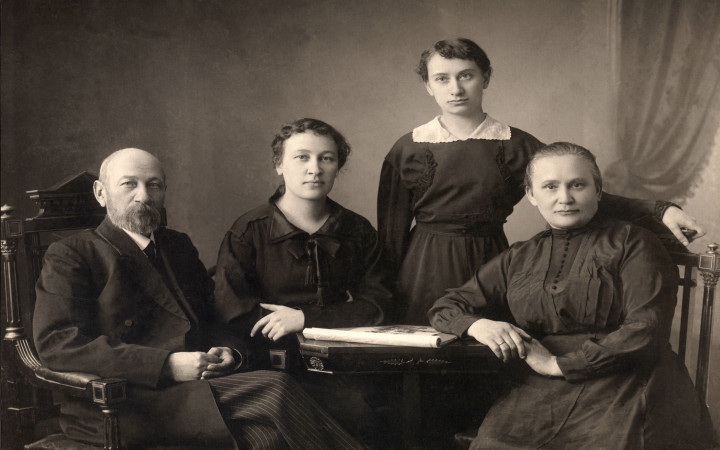If you're of similar age as many of our Wonder Friends out there, we can bet your parents were almost-certainly born before the Internet. Can you imagine what it must have been like to grow up in those ancient days before Wonderopolis, Google, and Facebook?
Even more so, think about those people who grew up before automobiles and electricity. How did they survive? Were they very happy? If you've ever seen old black-and-white photographs from long, long ago, the faces in those old photos would seem to confirm a sad existence: there's barely a smile to be found anywhere.
If you've never noticed this trend, it's absolutely true. Smiles in old photos are few and far between. Was life back then really that bad? Or is there another explanation for the lack of smiling faces in old photos?
Although they might not have had the Internet, people way back when weren't unhappy all the time. Yet, when cameras were around, they didn't capture much proof of any happiness that did exist. Experts who have studied the past have developed many different theories about why that's the case.
Some people believe it's because people long ago had really bad teeth. It's true that dental hygiene long ago wasn't what it is today. Did people simply refuse to smile for the camera because they didn't want to show their discolored or missing teeth?
It's possible, although some experts doubt that's a primary reason. Since everyone back then would have had similar oral health issues, people probably weren't that self-conscious about it, so it might not have been a significant influence on whether they smiled in photos.
Another possible factor was technology: the earliest cameras required a long exposure time to capture a photograph. Some believe people simply couldn't hold a smile for that long, so they instead chose a more sober expression that they could maintain for a longer time. Experts point out, however, that much shorter exposure times came about long before smiles became common in photos, suggesting that technology may not have been a primary factor either.
Some experts believe the lack of smiles in old photos is a legacy of historical views on smiling. In today's world where the "selfie" is so common, smiles are equated with happiness and well-being. In the distant past, however, wide smiles were often seen as signs of madness, loudness, lewdness, or other undesirable traits.
This historical view of smiling is demonstrated in portraits that were painted in the hundreds of years before cameras came into existence. Hundreds of years ago, a portrait was, for most people, a once-in-a-lifetime chance to be immortalized on canvas.
A solemn expression was considered a dignified way to be represented for eternity, and it was preferable to a goofy grin that might make someone question your sanity or morals. Experts believe this same view probably influenced the earliest photographs, which usually tried to emulate the painted portrait as an art form.
Since the earliest photographs were expensive to produce, they were similar to painted portraits in that they were often a once-in-a-lifetime chance for most people to be captured for posterity. They were viewed in many ways as important historical documents.
Smiles became much more common in photos beginning in the 1920s and 1930s. By that time, technology had progressed to the point that cameras were no longer limited to professionals. As more and more people came to own cameras, photography moved from taking still, portrait-like images to capturing the impromptu, surprising moments of life.
Today, we take thousands of photos with smartphones and cameras without giving it a second thought. We smile, we laugh, and we even make funny faces. Taking photographs is no longer a once-in-a-lifetime opportunity!





